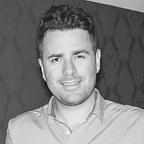Final reflections on the Google UX design certificate
What did I learn from getting the “equivalent” of a BA?
Irecently completed the Google UX Design Certificate, “a rigorous, hands-on program that covers the design process from end-to-end.” According to the Senior VP of Global Affairs at Google, Kent Walker, this certificate will be considered by Google as “the equivalent of a four-year degree for related roles.”
In other words, I got myself a BA (according to Google) in just over one month, and for less than USD$ 40. Well, kind of. I will question this claim made by Google below.
Here are my takeaways and reflections on this process:
Why did I do it?
- In my career, I have to keep learning daily. Every spring, I take on a more in-depth continuing education program. I trusted that Google and Coursera are well positioned in the industry to identify critical skills that are important for the future of work (taking into consideration the digital revolution and reskilling due to COVID)
- I was generally interested in UX design. I am interested in integrating what I learn about UX design into different projects I am currently involved in
- As someone trained in ethics, I am also curious to examine what role ethics could play in the process of UX design
- Having worked in higher education and innovation for many years, I am always interested in new pedagogical approaches and tools
Why so fast?
- My friend Sandoche’s learning lab inspired me: a method to learn about anything in one month by immersing oneself in one topic
- I wanted to test what could be done under USD$ 39 per month (USD$39/month after the initial seven days free trial period) and compare it with more traditional university programs
- I had some free time now, thanks to the spring holidays
- In my industry, we often have to acquire new skills rapidly
What I liked
(see more about this in my previous article)
- Accessibility: the product is accessible for anyone wanting to acquire new skills due to the pandemic (reskilling) and the digital transformation
- I feel I received a solid foundation of the UX design process
- Ethical topics were covered quite in-depth for an introductory course
What I did not like
- While I understand the constraint of MOOC courses, it would have been beneficial to receive feedback about my work from professionals in the field and not just from peers
- Some of the tests could have been more challenging
- In terms of UX, I might have been too kind in my first analysis. There is some room for improvement, such as better scrolling and navigation system through the course
Limitations
- I could have spent more time on theory and practice, of course. But I felt once I understood how things were working (thinking like a UX designer), I could move on to the next section
- I understand the rhetoric from Google, saying they will consider this the equivalent of a 4-year degree. It could be the case in terms of skill acquisition (learning a new software) and learning a new methodology (design thinking), but the slow type of critical reflection that can come only with more time and training should not be confused with this program. This course might be closer to an apprenticeship/vocational style education. And to be fair, this is very important. Growing up in Switzerland, vocational schools and apprenticeships are highly valued, and for good reasons. On the other hand, it should not be confused with university training. Both have their place, one is not better than the other, as both have different goals and roles in society
The results
- I gained a solid grasp on the design thinking process, which I can use and apply for other projects
- A portfolio with three case studies, that should give access to entry-level jobs in UX. I had to design solutions, responding to a specific prompt, after choosing the topic from a free design challenge generator
Skills acquired
- Empathizing with users by creating empathy maps, personas, user stories, and user journey maps
- Defining user pain points
- Ideating design solutions using Crazy Eights, How Might We, and competitive audits
- Creating wireframes and prototypes on paper and digitally
- Developing mockups using visual design elements and principles
- Designing in Figma and Adobe XD
- Conducting interviews and usability studies
- Considering accessibility at every point in the design process
My Portfolio
See my portfolio here: https://www.johannroduit.com/ux-design
Case Study 1
The Fig: Designing a menu and payment app for a food truck that allows users to order food according to their dietary preferences
(See the complete case study here)
Case Study 2
XTRM: Designing a booking experience — for all users — that allows them to book a personalized fitness session with a professional coach amid their busy lives
(See the complete case study here)
Case Study 3
impACT: Designing a way to help people get involved in local politics
(See the complete case study here)
Next
- I would like to compare more in-depth the portfolio of a UX designer finishing a more “traditional” educational journey with the portfolio of someone completing the Google Certificate. I quickly looked and compared my portfolio with some students who just launched a UX studio after a “normal” BA. I thought the results from the Google Certificate were indeed better in terms of showcasing different sets of skills. But this require more analysis
- I am looking forward to integrating what I have learned into my current career
- I could keep on improving these prototypes and see if it might be worth developing one into an app or website
- Taking more time to reflect on the process and the difference between learning a skill and training ones’ way of thinking, as universities are traditionally not necessary about learning “applied” skills but building critical thinking skills
